|
To view this article with pictures, as a PowerPoint presentation, click here. Allies in War Historically British and German soldiers were the staunchest of allies. The great Battle of Waterloo in 1815, was won by the alliance of British and German troops under the Duke of Wellington and Marshall Blücher, against their traditional enemies the French. Victoria and Alfred Queen Victoria herself was a descendant of Hanoverian kings and a daughter of a princess of Saxony. She couldn't have been more German herself. Prince Albert of Saxony was of course also thoroughly German. Queen Victoria and Prince Albert spoke German to one another in Buckingham Palace in London. Anglo Saxons Both the Angles and the Saxons, after whom the Anglo-Saxons are named, came from Germany. Christmas Trees It was Prince Albert who introduced the German tradition of Christmas trees to England. Cultural Exchange The cultural exchange from Germany to England during the 19th century was unrivalled. German composers were the most highly esteemed throughout the British Isles: Beethoven, Bach, Handel, Mendelssohn, Schubert, Schumann, Brahms, Haydn, Offenbach and Wagner. Germans read Sherlock Holmes and were enthusiastic Gilbert and Sullivan fans. Cricket was introduced to Germany as early as 1850. By 1914, there were at least 14 Cricket teams in Berlin alone. Lawn tennis was introduced from England to Germany by the 1890s, and the Berlin - Wannsee Golf club opened in 1895. Kindergarten From 1851, many British children spent the day attending a new type of elementary school imported from Germany, the Kindergarten. Frederick Froebel had introduced the Kindergarten system to Germany in 1837. Tourism Thomas Cook's first foreign tourism packages were to Germany, Austria and Switzerland. By the early 1900s, the English were emulating their German cousins by taking part in hiking tours with such German innovations as rucksacks, alpenstocks and Tyrolean hats. Fashions The fashion for dressing children in sailor suits originated in the 1840s when Queen Victoria began dressing her sons in naval costumes. This soon spread throughout the European Royal families. Inventions and Trade The Great Exhibition in Hyde Park in 1851 was organised by Prince Albert. Not only were British industrial products put on display, but there were more than 1,500 exhibitors from Germany. Throughout the 1800s, a torrent of German inventions and manufactured goods flowed into Britain. Germany was Britain’s main source of imports, and Germany was the most receptive overseas market for English goods. British homes were filled with Dresden china, Leica and Voigtlander cameras, Zeiss binoculars and Adler and Olympia typewriters. Fluorescent lamps, the Geiger counter, Radio-waves and x-rays were German discoveries which dominated the British market. Over 100,000 British children went to bed with teddy bears made by Steiff (after having played with their German made train sets, or china dolls). Germany provided British manufacturers with their most profitable market. Almost every German home used Oxford marmalade, English mustard and golden syrup, Sheffield cutlery and Wedgewood china. Many of the trains and steam ships in Germany were built in Britain. Germany dominated the optical industry and it was particularly Austrian Johann Voigtländer whose cameras and lenses dominated the market. Voigtländer was the one who introduced the English fashion of wearing monocles to Austria and Germany. Many German names are so familiar in Britain that they are almost considered indigenous: Nivea face cream, Osram light bulbs, Agfa film, Asprin from Bayer, Persil washing powder, AEG (Allgemeine Elektricitats-Gelsellschaft), BASF (Baden Aniline Soda Factory). Emile Berliner invented the gramophone in 1887 and the microphone in 1885. Diesel Rudolph Diesel invented the engine that bears his name, and which powered the British Navy. Siemens In the 1850s, William Siemens opened the British branch of the Siemens electrical engineering company. Siemens manufactured and laid the thousands of miles of under-sea telegraph and telephone cables that made Britain the hub of a global empire and London the centre of international finances. Reuter Julius Reuter set up an office in the stock exchange and founded the organisation that added news and information to this cable network. Chess At the first International Chess Tournament organised in London, 1851, the British were shocked when their top chess champion, Howard Staunton (whose name is given to the design of the modern chess set) was beaten by the German competitor, Adolf Anderssen. Rivalry Many noted that the seeds of later rivalry between Great Britain and Germany were sown in 1851, when British manufacturers realised what major competition they had from German industry, and when their chess champion could be beaten. However, nobody in the 19th century would have ever predicted war between Britain and Germany. Family Ties Queen Victoria and Prince Albert spoke German almost exclusively to each other. Princess Victoria, the daughter of the English Queen, was wife of Crown Prince Friederich Wilhelm of Germany. Mutual Support As late as December 1898, when war between Britain and France was a distinct possibility, Kaiser Wilhem II assured the British ambassador that: "If ever England were in serious danger", Germany would certainly come to her assistance. "Europe was not conceivable without England", he said. The Best of Friends In 1890, an English newspaper interviewed Chancellor Bismarck who noted that war between England and Germany was "wildly improbable". The British Foreign Secretary, Sir Edward Grey, in 1912, predicted that any differences between Britain and Germany "would never assume dangerous proportions". Even as late at August 1914, the British Ambassador to Berlin, Sir Edward Goschen, described British relations with Germany as "more friendly and cordial than they have been in years." A Special Relationship Politically, diplomatically and militarily, Britain was closer to Germany than any other country in the world. Throughout the 19thcentury, war between Britain and Germany was inconceivable. Throughout the 19th century the British and Germany people cherished their special relationship based on their common heritage, kingship, blood and Protestant Faith. A Shot That Shattered Sarajevo Tragically generations of friendship and mutual respect were shattered by an 18 year-old Bosnian Serb Marxist in Sarajevo, as he shot and assassinated the heir to the Austrian throne, Archduke, Franz Ferdinand and his wife, Sophie. How did a terrorist act in Sarajevo sever the special relationship between Britain and Germany that had endured for centuries? Serbia It was understandable that Austria was going to do something about their troublesome neighbour Serbia, who had been encouraging, hosting, training and arming revolutionaries, assassins and terrorists against the Austrian Hungarian Empire. Russia However, as Austria gave an ultimatum to Serbia, the Russian Empire mobilised against Austria and guaranteed full support to Serbia. Germany This led to Germany mobilising in support of its Austrian ally against Russia. France The French were allied to Russia and were spoiling for a fight to reverse the humiliating military defeat they had suffered when they last declared war on Germany in 1871. Edward's Spitefulness Strangely, King Edward VII had allied Britain to France and Russia, probably out of spite for his hardworking Evangelical parents, Queen Victoria and Prince Albert. So, Britain ended up on the side of its traditional enemies, France and Russia, and against its traditionally closest ally, Germany. Cutting the Cord On 4th August 1914, as Europe began mobilising for the most disastrous war in history, Britain's first act of war was not military, but aimed at communication. The steam cable vessel Telconia, was anchored in the North Sea under cover of darkness to trawl for cables on the seabed. By dawn her engineers had located and cut all five German cables, to France, Spain, Tenerife and the two cables to New York. A War of Words The severing of these transatlantic links heralded the beginning of a war of words. The deep wounds inflicted by the propaganda war would last far beyond the ending of the First World War and created a climate of mistrust and suspicion that poisoned Anglo-German relations for over a generation. Cutting the transatlantic cables also signalled the start of a new kind of war, a war of propaganda. Separating Family and Friends It cut the ties that had bound Britain and Germany closer than any other two nations on earth for over 100 years. The torrent of lies and deceit unleashed by clandestine public relations campaigns continue to inspire hate and prejudice, especially in Hollywood films to this day. Propaganda War Under Lloyd George, a secret British propaganda agency was set up which secretly enlisted the active support of virtually every great British writer, then alive, including: Sir Arthur Conan Doyle, Arnold Bennet, John Buchan, John Masefield, G.K. Chesterton, Thomas Hardy, Rudyard Kipling and H.G. Wells. A Legacy of Deceit Pens were dipped in the poison of lies and directed against their recent close friends in Germany. British Military Intelligence not only mobilised the literary big guns for its propaganda campaigns, but manufactured the most outrageous atrocity stories to attribute to their new enemies. The legacy of bitterness and disillusionment created by this clandestine propaganda war had far-reaching devastating consequences for world history throughout the 20th century. Media Manipulation David Lloyd George was the Chancellor of the Exchequer at the beginning of the war. He was one of the first politicians to understand how the media game was played and he shamelessly exploited the press for personal and professional advantage. In 1911, Lloyd George had championed the National Insurance Act, an important foundation stone of the welfare state. To push this highly controversial act through against strong resistance, Lloyd George sponsored media manipulation to mobilise public opinion. It was possibly the first time that a modern, democratically elected government had spent public money setting up an organisation specifically to manipulate public opinion. The National Insurance Commission set up by Lloyd George was the first government public relations machine producing newspaper articles, pamphlets and nationwide lectures in favour of legislation. Lloyd George's appointed leader of this commission was a fellow Liberal Member of Parliament, and a journalist, Charles Masterman. Wellington House So it was in 1914, that Lloyd George turned again to Charles Masterman to set up the British War Propaganda Bureau, based in Wellington House, London. On 2 September, Masterman invited Britain’s top literary talent to a secret meeting at Wellington House. Promoting War
The authors were requested to produce books, articles and pamphlets promoting British war aims. The Bureau would arrange to have these books published through normal commercial publishing houses: Oxford University Press, Thomas Nelson, Hodder and Stoughton, McMillan, etc. and guarantee their financial success. Endorsing War These well-known authors were also requested to sign full page advertisements to appear in New York Newspapers, denouncing Germany and appealing for American support. All these would be secretly financed by Wellington House. Top Secret This clandestine disinformation operation was so effective that it was only by 1935 that the existence of the War Propaganda Bureau became known. Conflict of Interest John Buchan, author of espionage tales such as The 39 Steps and Director of Thomas Nelson Publishing House, ended up as Director of the Ministry of Information. Managing the Media On 11 September 1914, Masterman held a meeting with all the editors of leading newspapers and formed the "Neutral Press Committee" to ensure that all British newspapers towed the line, advanced British war aims and disseminated British propaganda overseas. Disinformation In May 1915, the British War Propaganda Bureau produced the notorious "Report on the Alleged German Outrages." This was reported to be an independent and objective official review under the chairmanship of Viscount Bryce, former British Ambassador to the United States. It was in fact nothing but a piece of black propaganda loaded with fictitious atrocities and outrageous lies. Yet many of its fictitious claims, such as the bayonetting of babies, raping of nuns and chopping off of children’s hands and feet in Belgium, ended up in museum exhibits and school history textbooks! Rewriting Reality The British War Propaganda Bureau produced over 1,100 pamphlets and a vast number of books including: To Arms! by Arthur Conan Doyle, The Barbarism in Berlin by G.K. Chesterton, The New Army by Rudyard Kipling, The Two Maps of Europe by Hilaire Belloc, Liberty, a Statement of the British Case and War Scenes on the Western Front Line by Arnold Benet. Is England Apathetic? by Gilbert Parker, Gallipoli and the Old Front Line by John Masefield, A Sheaf and Another Sheaf by John Galsworthy. H.G. Wells produced The Research Magnificent and Mr Britling Sees it Through. War Mania Most memorably, H.G. Wells produced The War that Will End War. John Buchan produced flag waving propaganda: The Battle of Jutland and The Battle of the Somme. Buchan’s greatest hit was his espionage adventure: The 39 Steps. This book helped generate spy mania throughout Britain and Buchan followed it up in 1916, with Greenmantle. Distortion An example of the distortions published by Buchan was his Illustrated History of the War published in 1915, which claimed that the Germans were on the verge of defeat having lost 1.3 million soldiers, compared to less than 100,000 British lives! Fiction vs. Fiction Arthur Conan Doyle brought the world's most famous detective out of retirement to turn Sherlock Holmes deductive powers to trapping Von Bork - A fictitious German spy in England. Engineering Public Opinion Because the press was in on the deception, the public and most members of the British government remained in the dark and accepted the ever-growing torrent of anti-German literature as spontaneous expressions of journalists, authors and historians. German Propaganda In response the German Foreign Office set up and funded the Central Office for Foreign Services under the direction of Matthias Erzberger, the leader of the Catholic Centre Party. The Foreign services office was primarily concerned with collecting and studying printed works from abroad, and later published German newspapers and magazines for distribution abroad, including The Continental Times, Kriegs-Chronik (War Chronicle), and The Great War in Pictures. Pictures for Propaganda Each photograph was captioned in up to six languages, including English. Also the weekly Illustrated War-Courier. The German Foreign Services Office was especially keen on publishing photographs because visual propaganda needed no translation and pictures could touch the emotions directly and present evidence of their case. Later in the war they would also distribute films. Building up Morale In Berlin German writers, journalists and artists were encouraged to extol German courage, self-sacrifice and military prowess and to expose English treachery, cowardice and failure. Demoralising the Enemy The propaganda machines in Britain and Germany aimed to demoralize the enemy armed forces and civilian populations by damaging press reports and by dropping leaflets from the air. Aside from bolstering their own population with positive propaganda, the Bureau targeted the enemy population for negative propaganda. Anti-German pamphlets, leaflets and newspapers were distributed in Germany and Austria. Aircraft and balloons dropped propaganda leaflets over enemy areas. Propaganda was directly posted to selected addresses through enemy mails. German and Austrian postage stamps were forged. Moral Blockade Along with the British Navy's starvation blockade of Germany, came a moral Blockade through propaganda in neutral countries. German General Erich Ludendorff wrote in his post-war memoirs: "We were hypnotised by the enemy propaganda as a rabbit is by a snake. It was exceptionally clever, and conceived on a great scale. It worked by strong mass suggestion, kept in the closest touch with the military situation, and was unscrupulous as to the means it used…" Encouraging One's Own Forces Secondly they aimed to inspire their own civilian populations, gaining moral support for the war, inspiring young men to enlist and fight, and encouraging greater industrial and agricultural production. Enlisting Sympathy and Support from Neutrals The third goal of these propaganda departments was to gain the support of neutral countries. In this respect, both Britain and Germany had the same primary propaganda target - The United States. Germany's goal was to persuade the US to remain neutral and Britain's goal was to persuade the USA to military involvement on the allied side. Breaking the Stalemate As the militaries were locked in stalemate on the Western front, the propaganda war became decisive. No Photographs of Dead Soldiers! One of the first rules that Masterman enforced on British reporters was that there were to be absolutely no photographs published of the war, except those taken by official photographers appointed by the Bureau. There were to be no pictures of dead soldiers published. No Cameras Allowed Realising that unrestricted photography of the war could be very dangerous to civilian morale, the prohibition of cameras was enforced very seriously. No officer or soldier was permitted to be in possession of a camera. Technically, owning and using a camera in an operational area could be punishable by death by firing squad. However, as anyone who has visited World War I Museums such as Hill 60 near Ypres, can see hundreds of contemporary photographs which British soldiers risked taking that survived the war. Artists for War Propaganda In 1916, Masterman recruited a talented artist, Muirhead Bone, to paint more idealised depictions of the war. These pencil and charcoal sketches were so successful that some 90 war artists were employed, including William Orpen and William Rothenstein. Recruitment The most memorable propaganda image from WWI, that of General Kitchener announcing: "Your country wants you!" was actually ineffective. Voluntary recruitment fell so far below the levels needed for 1915, that the British government was obliged to introduce conscription. Targeting America The primary target for British propaganda - the United States, was successfully recruited to join the allied war effort. In fact so effective was the British propaganda in the USA, that even when the US government had declared war on Germany, the general perception among Americans was that America would only need to provide food, weapons and ammunition for the already victorious English, French and Russian armies. Deception It came as a shock to the Senate Majority Democratic leader that the US would have to send an army to Europe! Thomas Fleming, observed: "Leading newspapers such as the New York Tribune and the Los Angeles Times assured their readers that no American army was needed in Europe… Everyone thought that the war was as good as won. All the virtually victorious English, French and Russians needed from the United States was large amounts of food, weapons and ammunition, paid for by American loans…." Illusion Fleming attributed this state of ignorance on the effectiveness of the British War Propaganda Bureau. With the cutting of the German telegraph cables, and the effective censorship, America newsmen only knew of the war from the British and French side. As early as 1916, a US congressman had inserted into the congressional record, a complaint that the US had been deluged with stories "puffing British and French battlefield superiority. Speakers by the hundreds toured America telling the same lie." Smear Campaigns British propaganda sought to seize the moral high ground by accusing their German enemy of atrocious behaviour. Although Belgium had military alliances with France and Britain, the Germans were accused of violating Belgium "neutrality". Germany pointed out that Belgium "chose to put itself on the side of France… Belgium was one great fortified camp against Germany." In fact the French and British military had begun pouring into Belgium, 30 July, before Germany responded. Fabrications There could have been no one in Britain, and very few in the United States, who did not hear, or read, of the British Propaganda Bureau's fabrications of German soldiers killing women and children indiscriminately, raping nuns, cutting off the hands and feet of children and bayonetting babies. When Myth Becomes History The fact was that the German army was the most disciplined army in the world. Despite many challenges, including from American Lawyer, Clarence Darrow, offering US $1,000 to anyone who could substantiate one of these atrocities, not one documented case could ever be shown. Yet the Propaganda Bureau processed these urban myths into permanent historical "fact" by one of the most sophisticated and ruthless propaganda machines ever assembled. War Hysteria The notorious report on the alleged German outrages was published simultaneously in 30 languages in May 1915. Although completely discredited after the war, it was widely accepted at the time in Britain, America and in many neutral countries. Margaret Cole wrote of the war hysteria and "A barrage of untrue and idiotic atrocity story about children with their hands cut off by Germans, priests tied upside down to the clappers of their own bells, dead bodies boiled down for fat, and the like." The Absence of Evidence Irvin Cobb, an American reporter for the Hearst press, reported that while many had stories to tell of German atrocities in Belgium, he wasn’t able to find a single eyewitness. It had always happened to someone else, in another town. Robert Graves, a young British officer on the Western front wrote in his memoirs "Good Bye to All That: Propaganda reports of atrocities, it was agreed, were ridiculous. We no longer believe the highly coloured account of German atrocities in Belgium." War on Two Fronts As historian A.J.P. Taylor pointed out, by Germany being forced to fight a war on two fronts, with Russia in the East and Britain and France in the West, the German rail network was compelled to mobilise the millions of soldiers necessary to neutralise these threats on both the eastern and western fronts according to a very rigid time table. The German government had requested the Belgian government to allow passage for the German military to counter the French mobilisation against it. As the German chancellor, Bethmann Hollweg, explained to the British ambassador, this was a matter of "life and death to Germany." A Fight for Survival The German Army was not an expeditionary force crossing the channel to some other land mass. They were fighting for their life against the two greatest armies in the world at that time: France and Russia. Suspicion Those who had first-hand knowledge rejected the propaganda entirely. The better-educated sections of Britain regarded such accounts with suspicion. The uninformed majority of the public gullibly assumed that the reports they were being fed were true and accurate. As a result of the propaganda war of words, Germans came to be perceived by the newspaper reading public in France, Britain and the USA as militaristic, brutal, bestial barbarians. Fabricated Atrocities In 1917, Masterman published A Corpse Conversion Factory which claimed that the Germans were loading the bodies of dead soldiers onto railway carriages to be transported to a factory where they were to be melted down for soap! Historians were later able to trace the story back to its source, which was that the bodies of dead horses were being processed. The Times of London then twisted the story to involve human corpses. Falsehood in War Time In 1928, British Member of Parliament, Arthur Ponsonby, published Falsehood in War Time. In 200 pages, he detailed examples of the blatant lies and black propaganda published by British government departments and newspapers between 1914 and 1918. One of the memorable examples exposed by Ponsonby by tracking down the sources of these atrocity stories included the fate of the priests in Antwerp. The Priests in Antwerp - How Stories are Distorted In November 1914, the Cologne Daily News reported: "When the fall of Antwerp became known, the church bells were rung." This referred to the celebrating of the German victory. This item was the picked up by the French Le Matin with a deliberate distortion, claiming that according to the Cologne Daily News: "The Clergy at Antwerp were compelled to ring the church bells when the fortress was taken." The Times of London then picked up this story and embellished it further: "According to what Le Matin has heard from Cologne by Paris, the unfortunate Belgium priest who refused to ring the church bells when Antwerp was taken, have been driven away from their places." The Italian Corriere Della Sera then quoted the Times as reporting that: "The unfortunate Belgium priests who refused to ring the church bells when Antwerp was taken have been sentenced to hard labour." Le Matin in France then reported that according to this Italian newspaper: "It is confirmed that the barbaric conquerors of Antwerp punished the unfortunate Belgium priests for their heroic refusal to ring the church bells by hanging them upside down as live clappers to the bells with their heads down!" This farcical games of Chinese whispers as newspaper editors in France, Italy and England all sought to outdo one another with more bizarre, one upmanship. Bizarre Inventions One of the most vicious posters of WWI shows as German nurse standing beside a wounded British soldier, lying in his poor makeshift sick bed pleading for water. According to the caption: "Wounded and a prisoner, our soldier cries for water. A German sister pours it on the ground before his eyes. There is no woman in Britain who would do it. There is no woman in Britain who will forget it!" Malicious Doubtless there was no women in Germany who would do it either. No such incident ever occurred. It was manufactured in one of the malicious minds in Wellington House. As M.P. Arthur Ponsonby declared: "If lies were only used to deceive the enemy in the game of war, it would not be worth troubling about. But, as the purpose of most of them is to fan indignation and induce the flower of the countries youth to be ready to make the supreme sacrifice, it becomes a serious matter." Propaganda Kills As Ponsonby's documentation in Falsehood in War Time so eloquently demonstrated: "Lies in propaganda kill innocent people. Reported atrocities of the enemy inspire counter atrocities by one’s own forces. Atrocious behaviour is justified by lies about atrocious behaviour allegedly done by one’s opponents." Destructive Lies Some historians have noted that the harm caused by the propaganda war proved to be even more damaging than "the personal agony and destruction caused by trench fighting, unrestricted submarine warfare and aerial bombing of civilian targets. These created lasting physical and emotional trauma for individuals and lasting enmity between the nations. But the indelible memory of atrocity stories that had taken place only in the imaginations of British propaganda agents proved to be stronger and more persistent than any facts. …the power of myths over facts was the real legacy of the First War, and it was to prove one of the most important influences on future Anglo-German relations from both the British and the German points of view." Versailles Extortion The British propaganda office achieved its final victory after the war was over. The Versailles Peace Treaty signed in 1919, sought to pin war guilt exclusively on Germany. This made possible the extortion of ruinous reparations, brought about the economic and political collapse of Germany, led to the Great Depression and made a Second World War inevitable. "Now these things became our examples, to the intent that we should not lust after evil things as they also lusted… Now all these things happened to them as examples, and they were written for our admonition…" 1 Corinthians 10:6-11 Truth Jesus Christ taught: "You shall know the truth and the truth shall make you free." John 8:32 It is essential that we learn the truths of history to recognise the lies of propaganda. We need to study the Word of God so that we can be freed from deception. Dr. Peter Hammond Frontline Fellowship P.O. Box 74 Newlands 7725 Cape Town South Africa Tel: 021-689-4480 Email: [email protected] Sources: Best of Enemies - Britain and Germany: Truth and Lies in Two World Wars, by Richard Milton, Cambridge, ICON Books, 2007. The First World War, by A.J.P. Taylor, Penguin, London 1985. See also: The Causes, Consequences and Catastrophe of the First World War A Tale of Two Conferences Understanding Church History Assassination in Sarajevo Surprising Facts About the First World War A Tale of Two Conferences Understanding Church History Making Disciples of All Nations How Propaganda Changes Perceptions and People Brest-Litovsk and the Present Day Boundaries of Eastern Europe
0 Comments
Leave a Reply. |
Archives
July 2024
Categories
All
|
"And Jesus came and spoke to them, saying, “All authority has been given to Me in heaven and on earth.
Go therefore and make disciples of all the nations, baptizing them in the name of the Father and of the Son and of the Holy Spirit,
teaching them to observe all things that I have commanded you; and lo, I am with you always, even to the end of the age.” Amen.” Matthew 28: 18-20
Go therefore and make disciples of all the nations, baptizing them in the name of the Father and of the Son and of the Holy Spirit,
teaching them to observe all things that I have commanded you; and lo, I am with you always, even to the end of the age.” Amen.” Matthew 28: 18-20
|
P.O.Box 74 Newlands 7725
Cape Town South Africa |
|
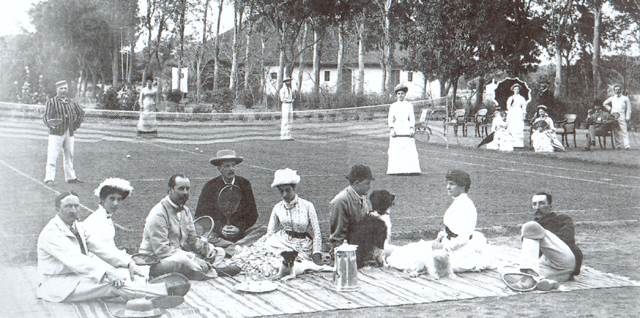
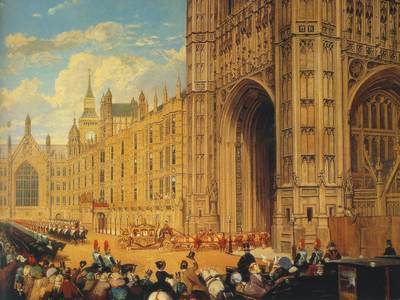
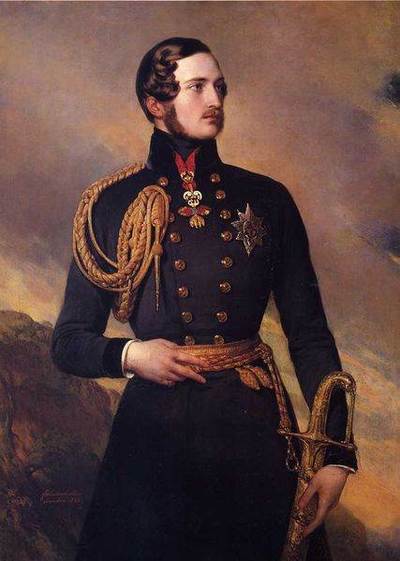

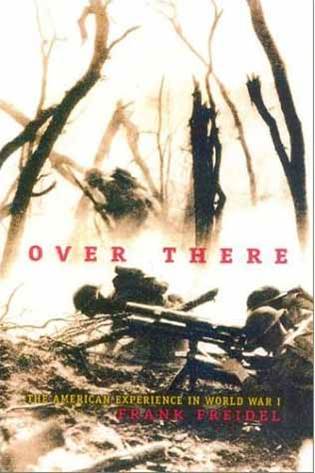
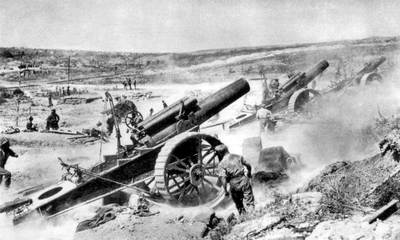
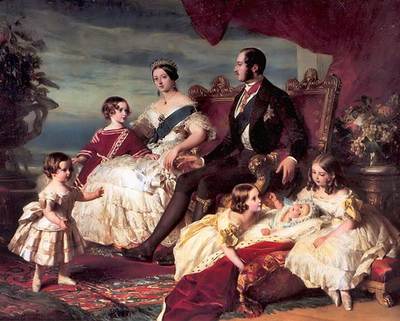
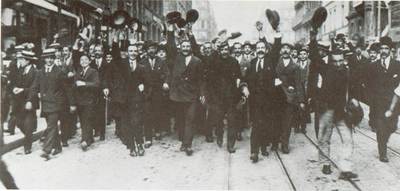
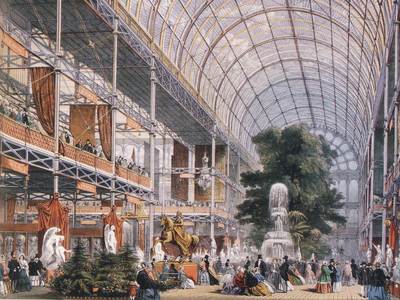
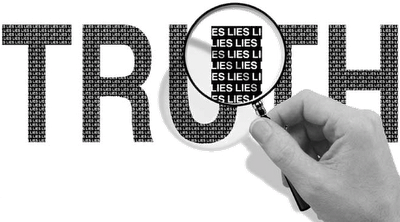
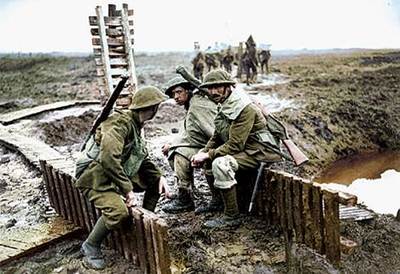
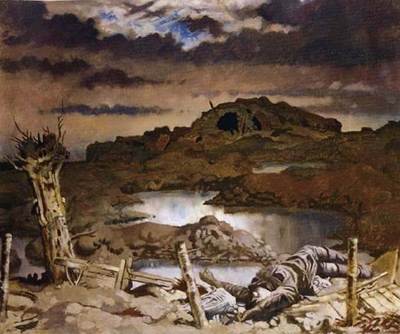
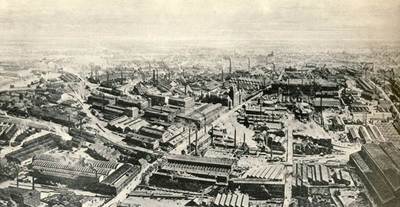
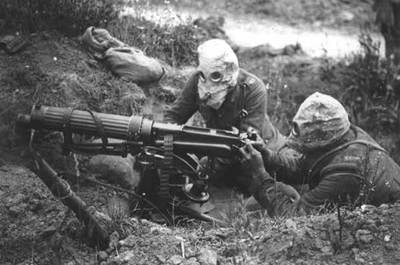
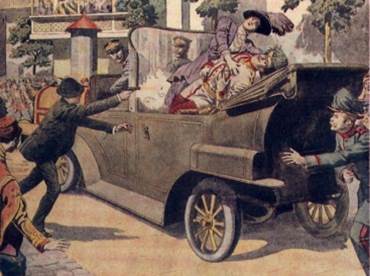
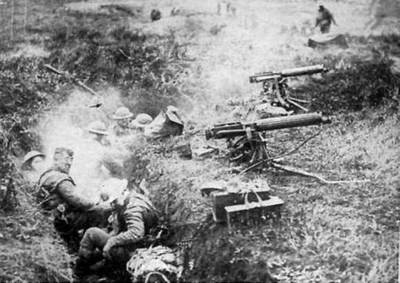

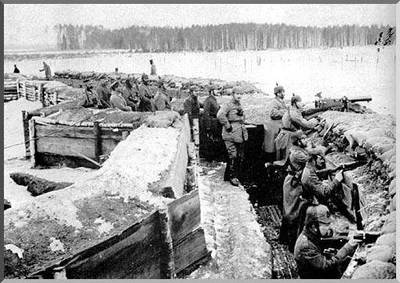
 RSS Feed
RSS Feed
